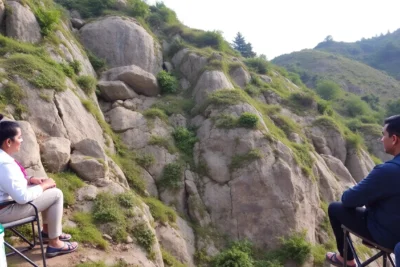
- The Architectural Marvel of Sagrada Familia: A Historical Overview
- Top 10 Fascinating Facts About the Sagrada Familia You Didn't Know
- The Symbolism Behind Sagrada Familia's Colors and Designs
- Gaudí's Vision: Exploring the Artistic Elements of the Sagrada Familia
- The Ongoing Construction of Sagrada Familia: What You Need to Know
- Visiting Sagrada Familia: Tips and Insights for an Unforgettable Experience
The Sagrada Familia, a masterpiece designed by the renowned architect Antoni Gaudí, stands as an iconic symbol of Barcelona and an enduring testament to the genius of Catalan Modernism. As one of the most visited monuments in Spain, this basilica captivates millions with its unique architectural style and intricate details.
For those intrigued by this architectural marvel, we present a collection of **Fascinating Sagrada Familia Facts You Need to Know**. From its long construction history to the symbolism embedded in its design, these facts will enhance your appreciation of this extraordinary landmark.
The Architectural Marvel of Sagrada Familia: A Historical Overview
The Sagrada Familia's architectural journey began in 1882, under the direction of architect Francisco de Paula del Villar. Shortly after, in 1883, the visionary Antoni Gaudí took over the project, introducing his unique blend of **Gothic and Art Nouveau** styles. Gaudí's innovative approach redefined traditional church architecture, utilizing organic forms and vibrant colors that mirror nature, making the basilica a remarkable representation of the Catalan Modernism movement.
One of the most intriguing aspects of the Sagrada Familia is its detailed symbolism, which reflects Gaudí's deep religious beliefs. Each facade and tower tells a story, exemplifying biblical events and themes. Notable elements include:
- The Nativity Facade - Celebrates the birth of Jesus with intricate sculptures.
- The Passion Facade - Represents the suffering of Christ, emphasizing stark, angular designs.
- The Glory Facade - Symbolizes the glory of Jesus and eternal life, still under construction.
Despite its ongoing construction, which is expected to conclude in 2026, the Sagrada Familia has already achieved UNESCO World Heritage status. This recognition underscores its significance not only as a religious site but also as a pioneering work of architecture that continues to inspire architects and visitors alike. The blending of art and faith within its walls showcases how modern architecture can reflect historical and cultural narratives.
Gaudí's use of innovative techniques, such as **hyperboloid structures** and natural lighting, contributes to the basilica's ethereal atmosphere. The interplay of light through stained glass creates a dynamic environment that changes throughout the day. This architectural marvel is not just a building; it’s an experience that invites visitors to ponder the relationship between faith, art, and nature.
Top 10 Fascinating Facts About the Sagrada Familia You Didn't Know
The Sagrada Familia isn't just famous for its breathtaking architecture; it also holds a myriad of fascinating facts that many visitors may not know. For instance, did you know that the basilica has a unique **completion date**? While construction began in 1882, it is anticipated to finish in 2026, aligning with the centenary of Gaudí's death. This long timeline illustrates the complexity and ambition of his vision.
Another interesting detail is Gaudí's innovative incorporation of **nature** into his designs. He drew inspiration from natural forms, which is evident in the columns that resemble tree trunks, creating a forest-like atmosphere inside the basilica. This approach not only serves an aesthetic purpose but also enhances the structural integrity of the building.
Moreover, the Sagrada Familia is equipped with an impressive **number of towers**. Once completed, it will feature a total of 18 towers, each representing a significant biblical figure. These towers will include the tallest one dedicated to Jesus Christ, which will reach a height of 172.5 meters, making it the tallest church building in the world.
Lastly, the Sagrada Familia's facades are not merely decorative; they are a narrative artwork. Each facade tells a story through its **sculptural details**, inviting visitors to explore the biblical themes embedded within. From the Nativity to the Passion, the intricate carvings provide a deeper understanding of the spiritual significance behind Gaudí's work.
The Symbolism Behind Sagrada Familia's Colors and Designs
The Sagrada Familia's colors and designs are deeply rooted in symbolism, reflecting both Gaudí's artistic vision and his spiritual beliefs. The vibrant hues found in the stained glass windows serve not only as decorative elements but also as a means to convey emotions and narratives. The interplay of light and color throughout the basilica enhances the visitor's spiritual experience, creating a space that is both awe-inspiring and reflective.
Each color used in the design of Sagrada Familia carries its own significance, often related to biblical themes and the natural world. For instance:
- Red and Orange: Symbolize passion and sacrifice, often associated with Christ’s suffering.
- Blue and Green: Represent tranquility and hope, mirroring the sky and nature.
- Gold: Signifies divinity and glory, particularly evident in the Glory Facade.
Moreover, the intricate designs, inspired by natural forms, reflect Gaudí's belief in the unity of nature and spirituality. The organic shapes found in the columns and facades evoke images of plants and natural landscapes, creating an environment that feels alive. This connection to nature reinforces the idea that the divine is present in all aspects of life.
To better understand the symbolism behind the Sagrada Familia's designs, consider the following table that compares key elements:
| Element | Symbolism | Purpose |
|---|---|---|
| Stained Glass | Emotional and spiritual expression | To create a dynamic atmosphere through light |
| Columns | Tree trunks | To provide structural integrity while resembling nature |
| Facade Sculptures | Biblical narratives | To tell stories and convey religious themes |
Gaudí's Vision: Exploring the Artistic Elements of the Sagrada Familia
Gaudí's vision for the Sagrada Familia extends far beyond traditional architectural boundaries, blending art and spirituality in a harmonious dialogue. He believed that **nature** was the ultimate source of inspiration, which is reflected in the basilica's organic forms and intricate details. For instance, the soaring columns mimic tree trunks, creating a sense of being enveloped by a natural forest, while the overall layout is designed to draw visitors upward, reminiscent of a spiritual journey towards the heavens.
One of the most captivating artistic elements of the Sagrada Familia is its elaborate facades, each crafted to convey profound biblical messages. The **Nativity Facade**, adorned with vibrant sculptures, celebrates the joy of Christ's birth, while the **Passion Facade** starkly portrays the suffering and sacrifice of Jesus. This contrast not only serves an artistic purpose but also invites reflection on the duality of existence—joy and sorrow, life and death—fostering a deeper connection with the spiritual themes embedded in the structure.
Moreover, Gaudí’s use of **color** plays a crucial role in enhancing the emotional atmosphere of the Sagrada Familia. The carefully chosen stained glass windows transform natural light into a kaleidoscope of hues, imbuing the interior with a sense of ethereality. As sunlight filters through, the shifting colors evoke different emotions throughout the day, turning the basilica into a living canvas of divine expression that resonates with visitors on multiple levels.
In addition to its aesthetic beauty, the Sagrada Familia's architectural elements are designed with a purpose that reflects Gaudí's deep spiritual convictions. The **hyperboloid structures** not only provide stability but also symbolize the connection between the earthly and the divine. By integrating elements that mirror the natural world, Gaudí’s masterpiece stands as a testament to his belief that architecture should elevate the human spirit and celebrate the divine presence in all aspects of life.
The Ongoing Construction of Sagrada Familia: What You Need to Know
The ongoing construction of the Sagrada Familia is a remarkable story of perseverance and innovation. Despite starting in 1882, this monumental project remains incomplete, primarily due to its highly intricate designs and the unique construction techniques employed by Antoni Gaudí. The basilica aims to fuse art, architecture, and spirituality, making each stone laid a vital part of Gaudí's original vision. With an anticipated completion date in 2026, the centenary of Gaudí's death, the project continues to attract attention worldwide.
One of the most fascinating aspects of the Sagrada Familia's construction is its reliance on modern technology while remaining true to Gaudí's original designs. Advanced computer-aided design (CAD) software and 3D printing techniques are being utilized to replicate his complex forms and structures accurately. This merger of tradition and technology exemplifies how state-of-the-art methods can enhance the execution of historic architectural visions, ensuring that Gaudí's masterpiece evolves while retaining its core identity.
As of now, the basilica boasts several completed sections, including the Nativity and Passion facades. The ongoing work primarily focuses on the Glory Facade and the construction of the remaining towers, which will ultimately total 18. Each tower carries profound significance, with the tallest dedicated to Jesus Christ, reaching an impressive height of 172.5 meters. This ambitious design aims to create a vertical representation of spirituality, drawing the eye upward and inspiring awe among visitors.
The funding for the Sagrada Familia’s construction relies heavily on private donations and ticket sales, highlighting its status as a self-sustaining project. This financial model has enabled the continuation of work despite various challenges, including the disruptions caused by the COVID-19 pandemic. The dedication towards completing the Sagrada Familia not only reflects a commitment to preserving Gaudí's legacy but also reinforces the basilica's role as a living monument that continues to resonate with contemporary audiences.
Visiting Sagrada Familia: Tips and Insights for an Unforgettable Experience
When planning your visit to the Sagrada Familia, consider booking your tickets online to avoid long queues. This iconic basilica attracts millions of visitors each year, and securing a time slot in advance ensures you can fully immerse yourself in its beauty without the hassle of waiting. Additionally, consider visiting during off-peak hours, typically early in the morning or later in the afternoon, for a more serene experience.
To enhance your visit, consider joining a guided tour. Knowledgeable guides can provide valuable insights into the architectural and historical significance of the Sagrada Familia. Look for tours that offer access to the towers for stunning panoramic views of Barcelona. Don't forget to bring your camera, as the intricate details of the facades and unique interior will leave you awestruck. Key items to remember include:
- Comfortable Shoes: You will be walking a lot, so wear suitable footwear.
- Water Bottle: Stay hydrated as you explore.
- Respectful Attire: As a place of worship, dress modestly when inside.
Lastly, take time to appreciate the surrounding area. The Sagrada Familia is located in a vibrant neighborhood filled with cafes, parks, and shops. Before or after your visit, stroll around to soak in the local culture, or relax in the nearby Parc de la Sagrada Familia. This blend of the historic and contemporary offers a rounded experience that complements the grandeur of Gaudí's masterpiece.
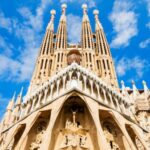 What is Sagrada Familia in Barcelona: A Guide to Gaudí's Masterpiece
What is Sagrada Familia in Barcelona: A Guide to Gaudí's Masterpiece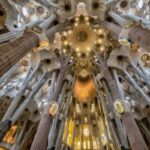 Is Sagrada Familia Closed? All You Need to Know
Is Sagrada Familia Closed? All You Need to Know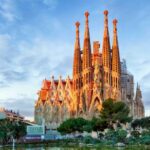 The Fascinating Facts You Need to Know About La Sagrada Familia in Barcelona
The Fascinating Facts You Need to Know About La Sagrada Familia in Barcelona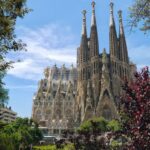 The Unfinished Enigma of Sagrada Familia: Barcelona's Architectural Marvel
The Unfinished Enigma of Sagrada Familia: Barcelona's Architectural MarvelIf you want to know other articles similar to Fascinating Sagrada Familia Facts You Need to Know you can visit the category Blog.
Deja una respuesta

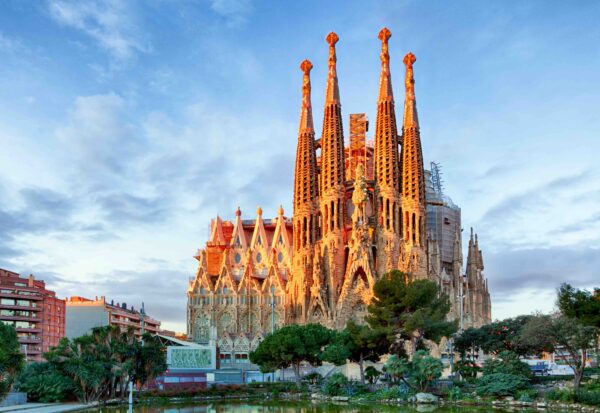
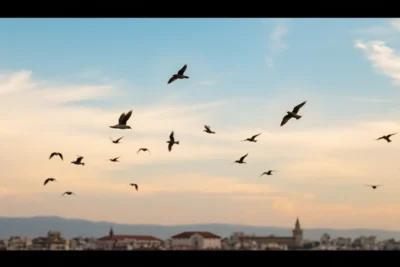



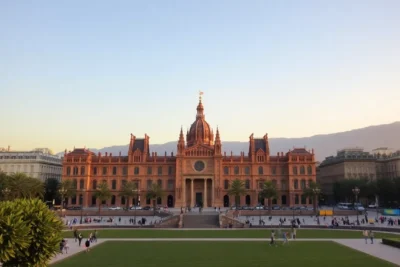

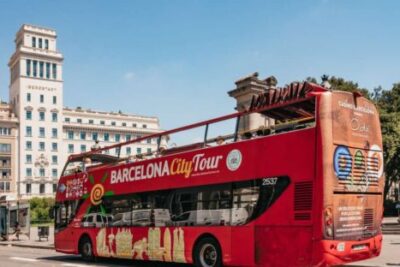
Read more!